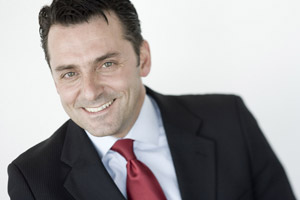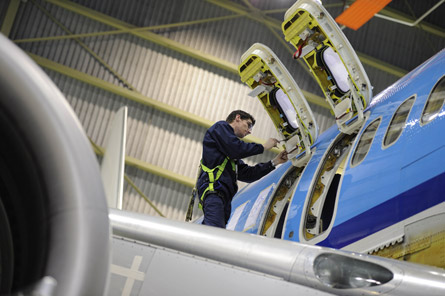Antonius "Ton" Dortmans succeeded Peter de Swert as KLM Engineering & Maintenance executive vice-president in February. Even though he had already been in the deputy post since 2008, Dortmans says it was nonetheless a challenging move in the current economic climate with all-pervading cost pressures.
 |
|---|
| "In the airframe side we have to make more steps because we are less competitive there" Ton Dortmans |
Cost cuts will be the main focus for KLM E&M, with reductions of between 10% and 20% depending on the area of activity. "In the airframe side we have to make more steps, because we are less competitive there than in the engine and component sides," says Dortmans.
The MRO provider wants to continue conducting airframe maintenance at Schiphol - 80% of which is for the parent carrier - but it is evaluating some outsourcing. Two years ago, the company stopped Boeing 747 "D" checks and moved the work for the parent fleet to Asia Pacific. "If costs are much higher than the market price [and] one is not able to lower costs and improve processes, then one should decide to outsource parts," he says.
The management wants to make work processes leaner and improve, for example, material supplies on the hangar floor to keep, as Dortmans puts it, "mechanics on the airplane". But it is also considering shifting work to its narrowbody subsidiary, KLM UK Engineering, in Norwich.
The UK facility offers lower labour costs than Amsterdam and in spite of fierce competition from around 50 European airframe maintenance providers for the Boeing 737 - which KLM UK Engineering specialises in - it is showing small growth with "positive pre-tax earnings", according to Dortmans.
The site also needs new capabilities for aircraft that will be relevant in future. While it services ATR turboprops, the existing capabilities for BAE Systems 146/Avro RJ, Fokker 50 and 100 regional aircraft will become obsolete over the next years. A survey of new models is under way, but the outcome is not yet clear.
ENGINE AND COMPONENTS
The main growth is to come through component and engine support, as well as more international business, although Dortmans declines to give specific targets. Around 50% and 60% of the MRO provider's respective component and engine work is for third-party clients.
KLM E&M wants to maintain the engines for its parent's future Boeing 787 and Airbus A350 fleet in house and offer these capabilities to other operators too. But the negotiations with the engine manufacturers appear to have been complicated by the group's aftermarket ambitions, especially for the exclusively Rolls-Royce Trent XWB-powered A350.
 |
|---|
| Air France-KLM KLM E&M wants to continue conducting airframe maintenance at Schipol airport |
While Air France and KLM have thus far opted for General Electric engines on their fleets, the group says it would be possible to establish overhaul lines for both Trent XWB and GEnx engines, if it were to stay with GE on the 787.
"We would like to be on the [third-party] market also for Rolls-Royce engines," says Dortmans. "But that's not only down to us, but also the supplier." He adds that the UK manufacturer is protecting the aftermarket "a little more than GE", and that it is too early to comment on whether a co-operation would be possible.
It is questionable to what extent Rolls-Royce is interested in another European overhaul shop, given that it has a MRO joint venture called N3 Engine Overhaul Services with Lufthansa Technik in Germany.
On the component side, KLM E&M is taking more visible steps towards the future. In April, the group inked a partnership with Hamilton Sundstrand to service the manufacturer's 787 components, for which LOT Polish Airlines has become the first customer. Other key strategic types are Embraer's 170 and 190 series, the A350 and KLM's short-haul backbone - the 737.
KLM E&M will open two component repair shops in China with unnamed local partners. One will focus on avionics, while the other specialises in mechanical equipment. Dortmans says that aside from establishing new capabilities, the MRO provider wants to grow its global footprint in regions where airlines will not send their components to Europe. This will be done through partnerships and joint ventures rather than takeovers, he adds.
Source: Flight International























